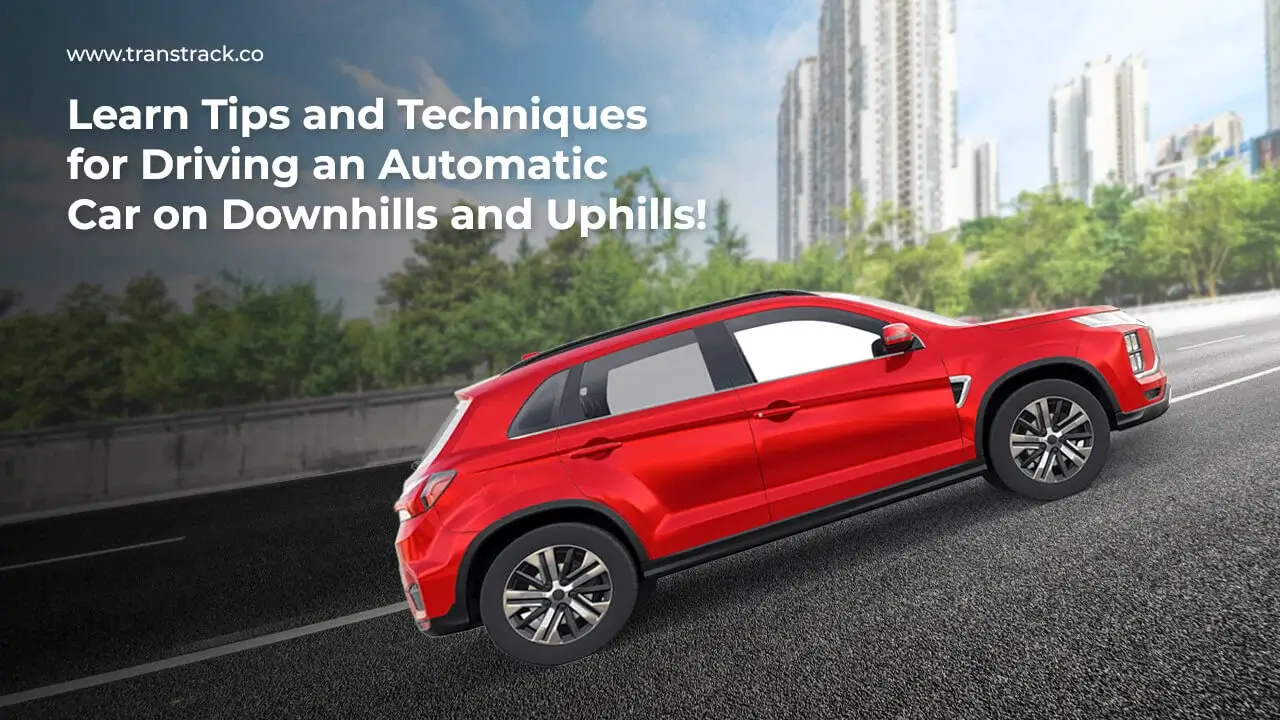Learn Tips and Techniques for Driving an Automatic Car on Downhills and Uphills!
Posted on March 24, 2025 by Nur Wachda Mihmidati

Driving an automatic car is quite straightforward if you follow the provided tips. Automatic cars, also known as automatic transmission cars, are becoming increasingly popular in Indonesia. Many drivers prefer automatic cars because they are easier to drive and do not require expertise in operating a clutch. However, driving an automatic car also requires the right techniques to ensure smooth and safe driving.
In this article, we will delve into the proper way to drive an automatic car, whether on flat roads, uphill, or downhill. The tips provided will also help drivers maintain the car’s engine health and prevent damage. Pay close attention to the explanations.
How to Drive an Automatic Car
Driving an automatic car may seem easier than a manual one since it does not involve using a clutch. However, drivers need to have a good understanding of how to operate the automatic transmission to ensure safe and smooth driving. Here is a more detailed explanation of how to drive an automatic car:
Ensure the Gear Lever is in the P or Park Position
Before starting the car, make sure the gear lever is in the P or Park position. This is to lock the wheels and prevent them from moving when the car is parked. Afterward, ensure that your hands and feet are in a safe position before starting the engine.
Do Not Start the Engine Immediately
After confirming that the gear lever is in the P position, do not start the engine right away. Ensure that the handbrake is engaged and that you are pressing the brake pedal firmly before turning on the engine.
Keep Your Foot on the Brake Pedal When Starting
When starting the automatic car’s engine, make sure your foot is still firmly on the brake pedal. This is to prevent the car from moving suddenly when the engine is turned on.
Press the Brake Pedal When Shifting the Gear Lever
When shifting the gear lever from the P position to another, make sure you keep your foot on the brake pedal. This prevents the car from moving suddenly when you change the transmission position.
Understand the Functions of the Gear Lever
The gear lever in an automatic car has several functions that drivers need to understand. The P position is used for parking, the R position for reversing, the N position for temporary stops, and the D position for driving forward. Additionally, there is also an L or low gear position used when the car needs to climb steep slopes.
Utilize Driving Modes
Automatic cars often have driving modes like S (Sport) or Eco (Economy) mode, which can be selected based on your needs. Sport mode enhances acceleration and handling performance, while Eco mode is for fuel efficiency.
Using Manual Transmission
Some automatic cars come equipped with a manual transmission mode that allows drivers to manually control the gears. In this mode, drivers can shift gears up or down manually by using buttons or paddles located around the steering wheel.
In conclusion, driving an automatic car is not difficult if drivers have a good understanding of how to operate the automatic transmission. Always follow the correct and safe usage procedures to ensure the car can be driven smoothly and safely.
How to Drive an Automatic Car on Uphills
Driving an automatic car on uphill roads is slightly different from driving on flat terrain. However, by paying attention to the following aspects, drivers can navigate uphill roads safely and comfortably:
Adjust the Automatic Transmission to Suit the Uphill Conditions
When facing an uphill climb, ensure that you adjust the automatic transmission to the appropriate position. If the incline is steep, it’s best to use the L or low gear position to make it easier for the car to ascend. However, if the incline is not too steep, you can still use the D position.
Observe the Road Surface
Before starting the ascent, drivers should first observe the road surface. If the road is slippery or wet, it’s advisable to reduce speed and adjust the gear position to prevent the car from slipping while climbing.
Familiarize Yourself with Driving an Automatic Car
When driving an automatic car on an uphill slope, it’s essential that drivers are familiar with the car’s characteristics. Start by adjusting the gas and brake pedals to ensure that the car doesn’t move too fast or too slow. This way, drivers can better control the vehicle.
Avoid Using the Brake and Transmission Simultaneously
When descending an incline, drivers should avoid using the brake and transmission simultaneously. This can cause rapid brake wear and make the car unstable. Instead, apply the brakes gradually and adjust the transmission to the appropriate position to safely slow down the car.
Driving an automatic car on uphill slopes may require some skill and experience. However, by considering factors such as gear adjustment, road conditions, familiarizing yourself with the car’s characteristics, and avoiding simultaneous use of brakes and transmission, drivers can safely and comfortably navigate uphill terrain.
How to Drive an Automatic Car on Downhills
Driving an automatic car downhill can pose a challenge for drivers, especially when faced with steep descents. In addition to mastering downhill driving techniques, drivers also need to pay attention to the health of the automatic car’s engine. To ensure the engine remains durable while driving downhill in an automatic car, drivers can take the following measures:
Utilize Engine Brake
Engine braking is a driving technique that relies on the engine’s power to slow down the car, rather than the brakes. In the case of an automatic car, engine braking is achieved by setting the transmission to the L or low gear position when descending. This allows the engine to assist in slowing down the car, making it easier for the driver to control the speed. This technique reduces the strain on the braking system, preventing brake overheating and ensuring engine durability.
Avoid Overreliance on the Brakes
Excessive use of the brakes while descending can lead to overheating of the braking system and premature engine wear. Additionally, frequent use of the brakes can result in reduced responsiveness, potentially leading to accidents. Therefore, drivers should reduce brake usage and employ engine braking techniques to help slow down the car.
Monitor Engine Temperature
Automatic car engines are susceptible to overheating when used excessively, particularly when navigating steep downhill descents. Therefore, drivers should regularly monitor the engine’s temperature while descending. If the engine temperature becomes too high, it’s advisable for the driver to take a brief break to allow the engine to cool down.
Observe Road Conditions
Before beginning a descent, drivers should carefully assess road conditions. Ensure that the road is not slippery or riddled with potholes, as these factors can destabilize the car and force the engine to work excessively. If the road conditions are less than ideal, drivers should reduce their speed and use engine braking techniques to aid in slowing down the car.
By implementing these measures, drivers can reduce the risk of engine damage in automatic cars while enjoying a safer and more comfortable journey.
Mistakes to Avoid
Here are some mistakes to avoid when driving an automatic car:
1. Driving with the Transmission Lever in the N (Neutral) Position
- Problem: Driving with the transmission lever in the N (Neutral) position may cause the transmission to not work properly, which risks damaging engine and transmission components. In addition, it reduces control over the car, especially when going downhill or when sudden acceleration is required.
- Solution: Always keep the transmission lever in the D (Drive) position while driving.
2. Holding the Car in R (Reverse) or P (Park) Position While Driving
- Problem: Moving the transmission lever to the R (Reverse) or P (Park) position while the car is still moving may permanently damage the transmission. These positions are designed for stopped cars only.
- Solution: Make sure the car is fully stopped before moving the lever to the R or P position.
3. Using the P (Park) Position While Waiting at a Red Light
- Problem: Using the P position when stopped at a red light or when stopped for a short period of time may put additional load on the transmission system and cause damage. The car may get stuck if the lever is moved back from the P position without paying attention to the brake pedal.
- Solution: Use the D (Drive) position when temporarily stopping at a red light or in traffic, and hold the car with the brake pedal.
4. Stepping on the Gas and Brake Pedals Simultaneously
- Problem: Stepping on the gas and brake pedals at the same time can cause wear and tear on these two components as well as damage to the transmission. It can also reduce fuel efficiency and affect engine performance.
- Solution: Focus on one pedal at a time-the brake when stopping and the gas when accelerating the car.
5. Moving the Transmission Lever Quickly or Carelessly
- Problem: Moving the transmission lever too quickly or with rough movements can cause damage to the transmission system and engine components. For example, moving the lever from the D to R position or vice versa while the car is still moving.
- Solution: Make sure the car comes to a complete stop or moves very slowly before shifting the transmission lever, and shift the lever with a smooth motion.
6. Using the L (Low) Position for Too Long
- Problem: The L (Low) position is usually used for going downhill or when more torque is required. Using this position for too long may cause the engine to work harder, resulting in higher fuel consumption and damage to the engine.
- Solution: Use the L position only when necessary, such as when climbing or descending a hill, and return to the D position immediately afterwards.
7. Releasing the Brake Pedal Too Soon After Changing Transmission Position
- Problem: Releasing the brake pedal too quickly after moving the lever from the P or N to D position may cause shock to the transmission system and other components.
- Solution: Make a softer and slower transition when shifting transmission positions.
8. Neglecting the Transmission System Check
- Problems: A problematic or unmaintained transmission can lead to decreased car performance and even damage in the long run.
- Solution: Perform regular checks and servicing of the transmission system according to the manufacturer’s guidelines to ensure its optimal performance.
Avoiding these mistakes can extend the life of your automatic car, maintain driving comfort, and avoid expensive repair costs. Make sure to always understand how the automatic transmission system works and drive carefully.

In conclusion, these are some tips on driving an automatic car correctly and maintaining the engine’s health. However, in addition to engine maintenance, drivers should also consider overall vehicle maintenance. To facilitate easy and efficient vehicle maintenance monitoring, TransTRACK offers a Vehicle Maintenance System that helps drivers keep track of maintenance schedules, reminds them to change oil and filters, and monitors the car’s engine condition.
By using TransTRACK‘s Vehicle Maintenance System, drivers can more easily and efficiently maintain their vehicle’s health, ensuring longevity and peace of mind while driving.
Recent Post
Topic :
Recommended Articles

 Bahasa Indonesia
Bahasa Indonesia








